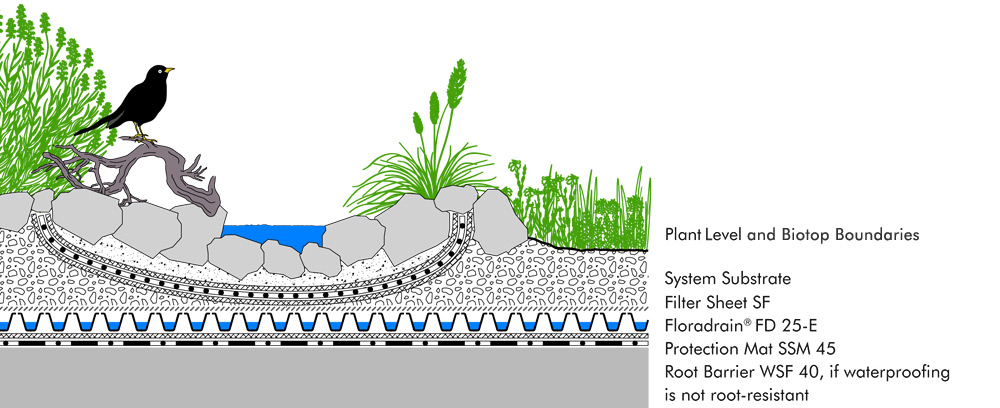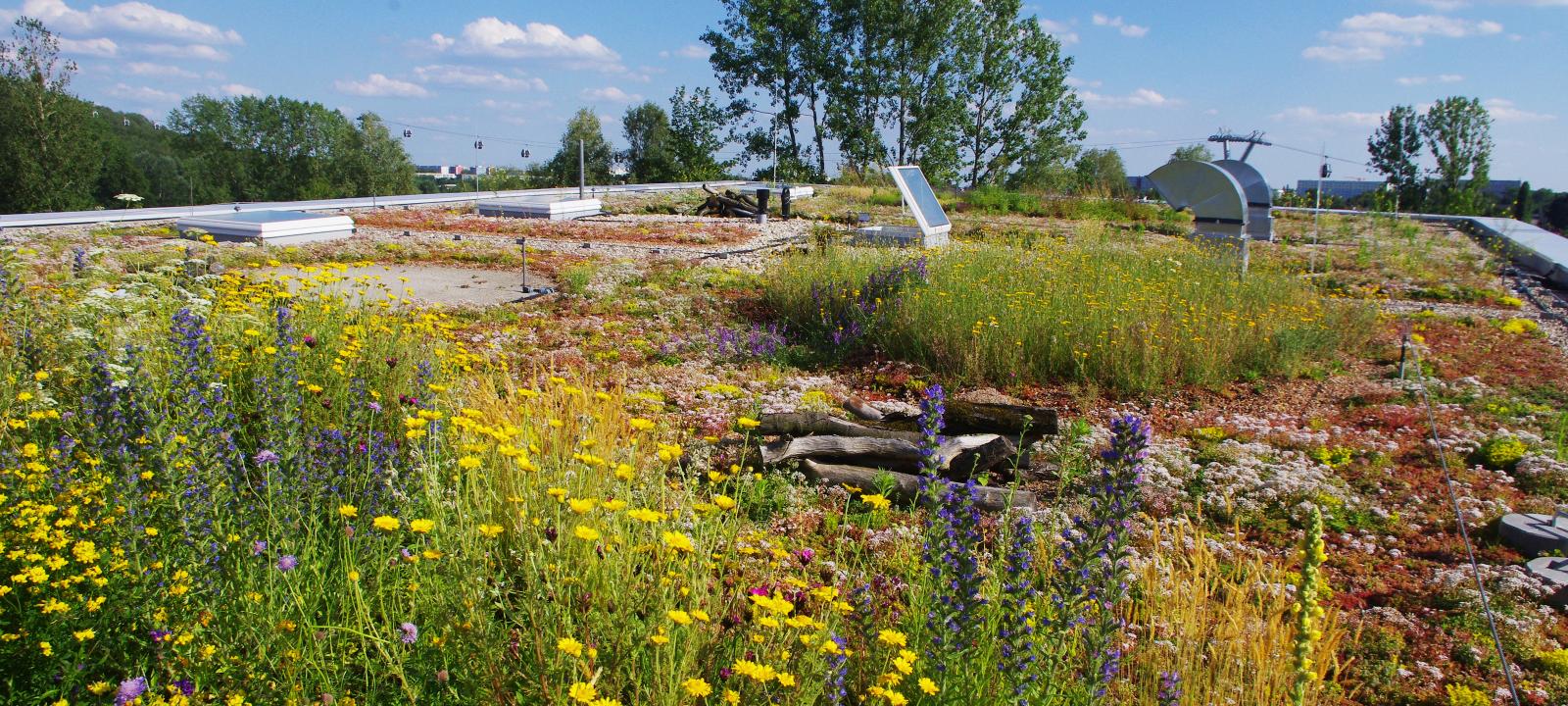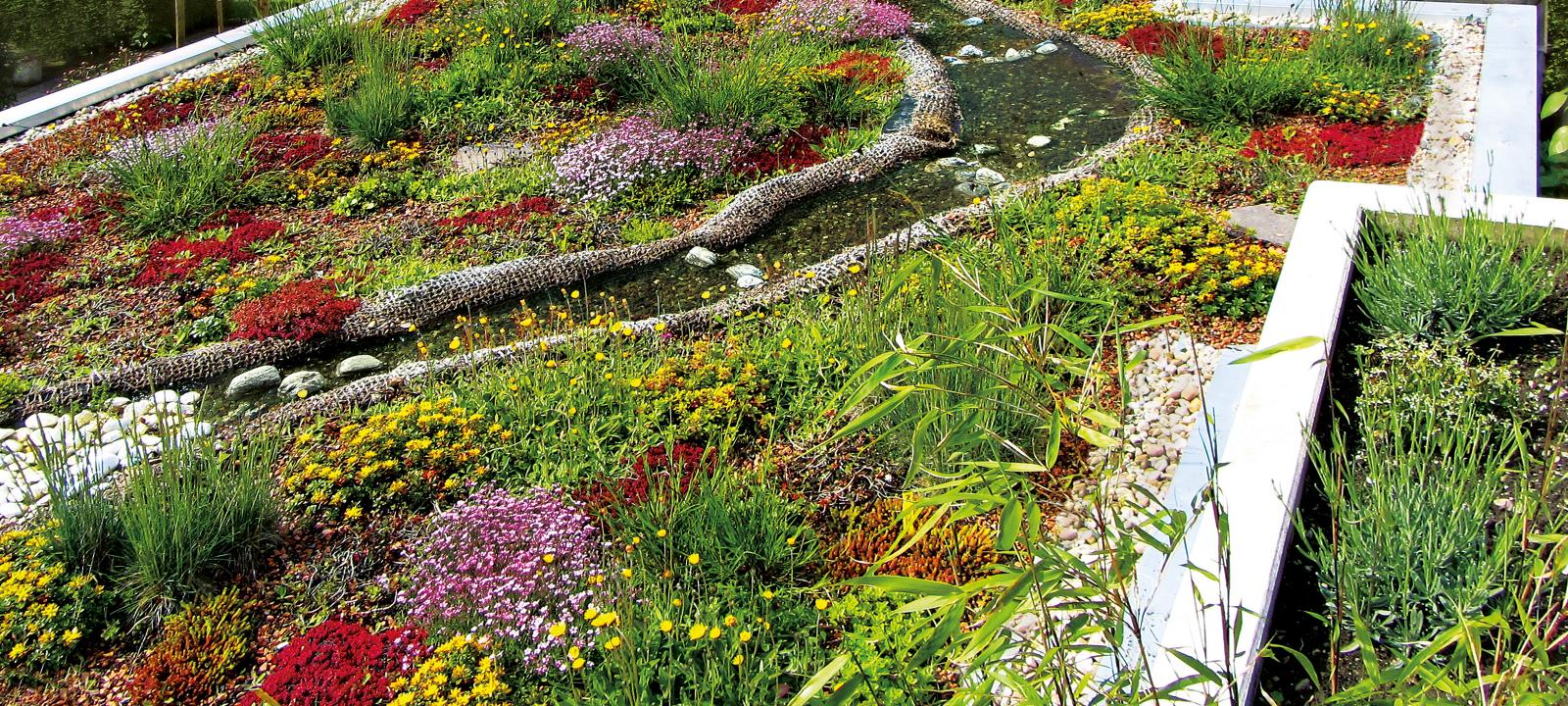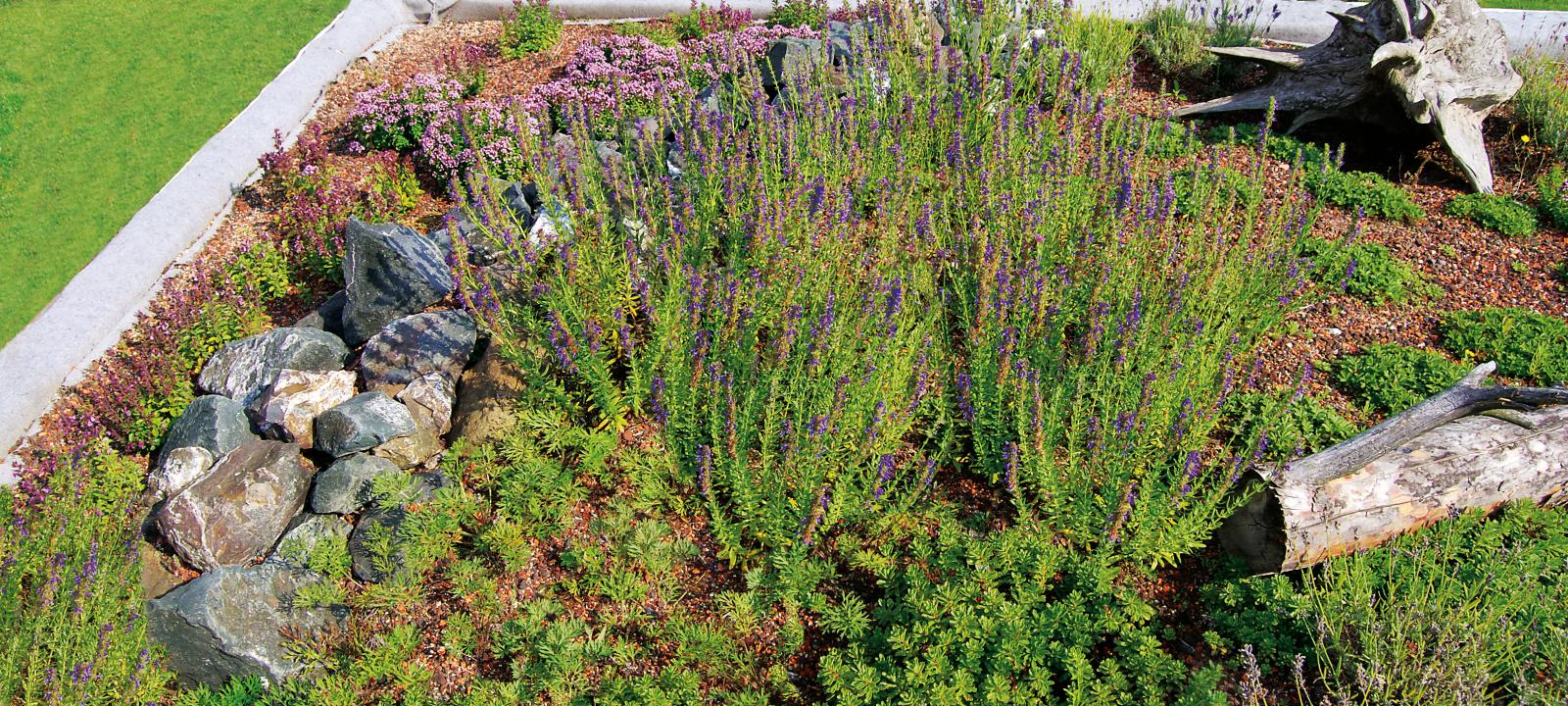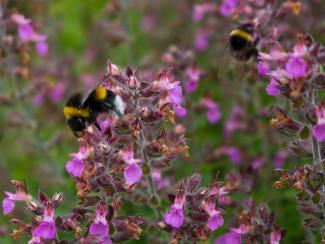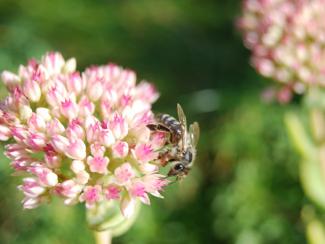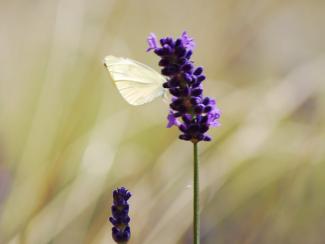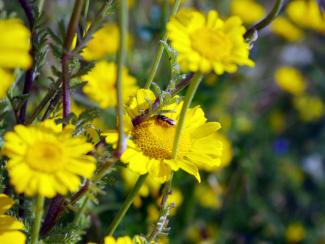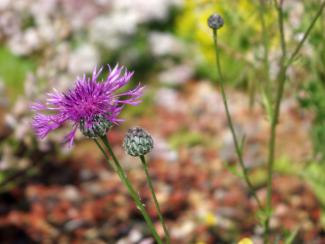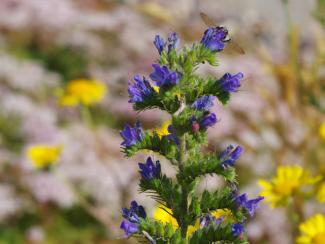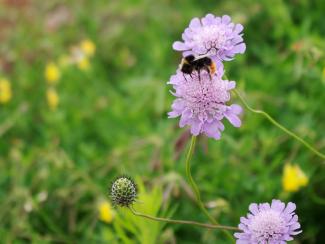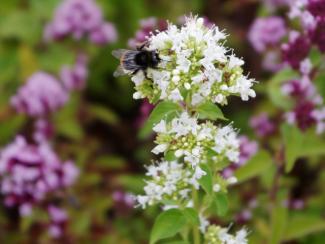Biodiversity Green Roof
Biodiversity Green Roofs – Providing Substitute Habitats for Flora and Fauna
In areas where nature has been destroyed by construction works and the ground is sealed, green roofs can partially compensate for lost green areas and can provide replacement habitats for flora and fauna. Above all, natural, low-maintenance extensive green roofs are important refuges for flora and fauna. Wild bees, butterflies and ground beetles find food and shelter there. However, the development of biodiversity depends to a great extent on how the habitats that are provided for the flora and fauna on a roof are structured. Pure sedum green roofs that are frequently installed in conjunction with very shallow substrate depths are not suitable for exploiting this potential. Indeed, the biotope function of greened roof areas can be specifically fostered with very little work using various design features and applying basic biodiversity principles during the planning and implementation stages.
How to foster the biotope function of greened roof areas:
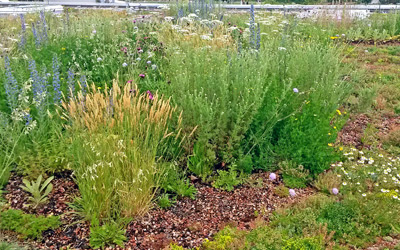 Modulating the substrate surface: Varying the substrate depth creates different habitats that will extend the range of species available in the planting areas.
Modulating the substrate surface: Varying the substrate depth creates different habitats that will extend the range of species available in the planting areas.
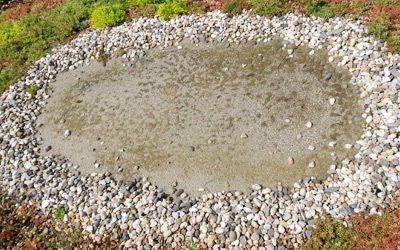 Sand pockets and coarse gravel beds: Plant-free areas are an important enrichment of the biotope and are used by insects and other roof inhabitants as a hideaway, breeding ground and a sun trap.
Sand pockets and coarse gravel beds: Plant-free areas are an important enrichment of the biotope and are used by insects and other roof inhabitants as a hideaway, breeding ground and a sun trap.
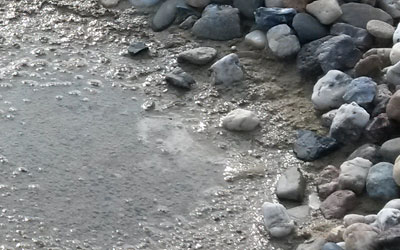 Temporary water bodies: Using borders and sheeting, areas can be created to retain stormwater on the roof for an extended period of time. It improves the amount of water available, e.g. for insects and birds.
Temporary water bodies: Using borders and sheeting, areas can be created to retain stormwater on the roof for an extended period of time. It improves the amount of water available, e.g. for insects and birds.
 Plant selection, e.g. forage plants: If areas with a deeper substrate are available (e.g. by creating hilly mounds), forage plants can be used for insects and birds or even a wider range of indigenous plants.
Plant selection, e.g. forage plants: If areas with a deeper substrate are available (e.g. by creating hilly mounds), forage plants can be used for insects and birds or even a wider range of indigenous plants.
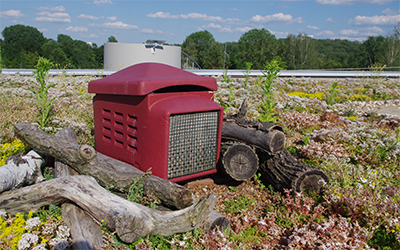 Nesting aids: The use of nesting aids specifically fosters insect colonisation.
Nesting aids: The use of nesting aids specifically fosters insect colonisation.
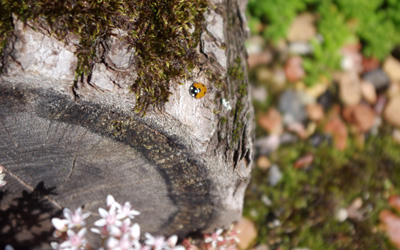 Introducing deadwood: Dead branches and tree trunks are a particularly valuable structural element. Deadwood is used as a habitat by moss, lichens, fungi, beetles, flies, midges, ants and wild bees, among others.
Introducing deadwood: Dead branches and tree trunks are a particularly valuable structural element. Deadwood is used as a habitat by moss, lichens, fungi, beetles, flies, midges, ants and wild bees, among others.
System build-up
